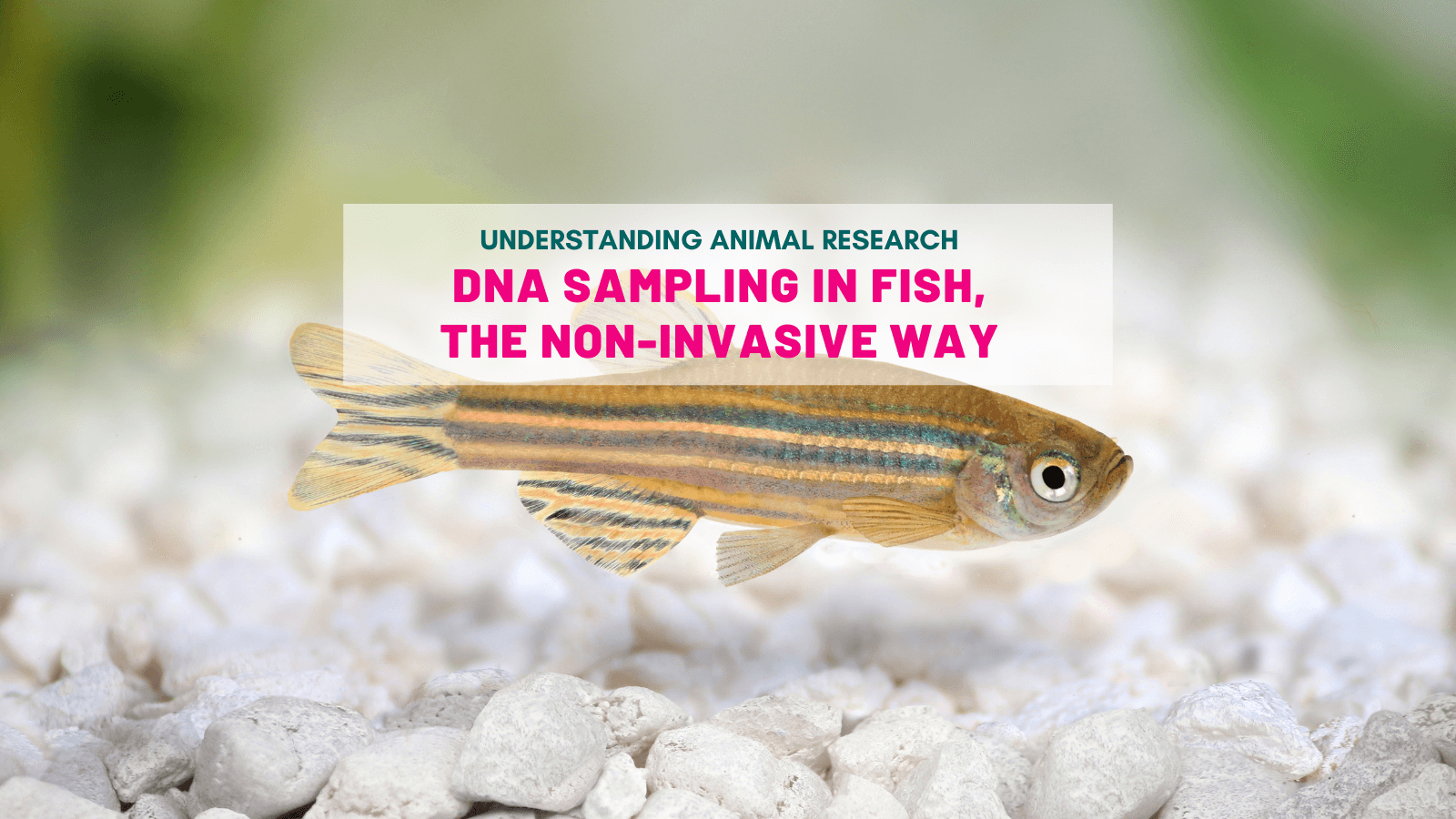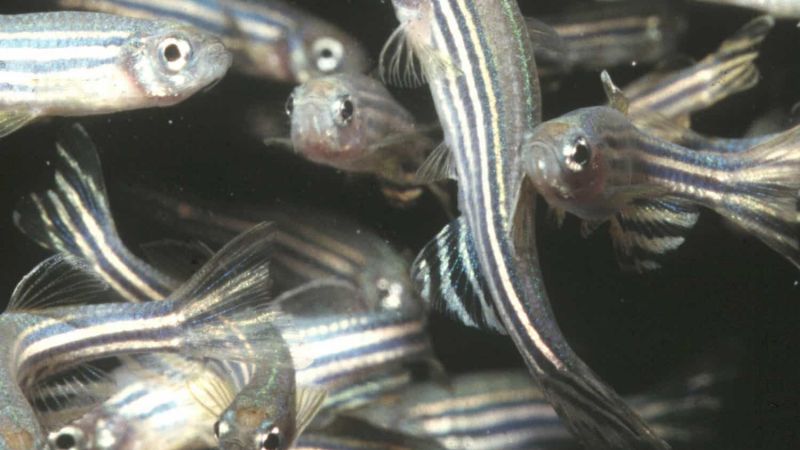
Fish are widely used in research for different purposes. They are considered useful alternatives to mammals, and their numbers in the lab have been rising over recent years in the UK. Small-bodied model fish species such as the zebrafish and the three-spined stickleback, have the advantage of being small, easy to maintain and possessing similarities to other vertebrates.
Fin clipping to collect DNA has lasting effects on the fish
In developmental biology, toxicology or even ecological studies, DNA is frequently collected from these fish for the purpose of the studies, but also simply to identify them through genotyping. To get a sample of the fish DNA, most labs use what is called fin clipping. Under anaesthesia, a tissue biopsy is collected from live animals.
However, this practice isn’t benign. Fish may be negatively affected by any or all of the constituent parts of the fin clipping procedure: capture in a net, anaesthesia, exposure to air, removal of a small section of caudal fin with a scalpel blade and subsequent recovery.
The procedure shows long-term effects on the fish. They experience increased anxiety-like behaviour, including increased ventilation, reduced activity, increased time at the bottom of a tank, and decreased feeding. Fin clipping also induces the release of the primary stress hormone cortisol and can subsequently increase the risk of infection, and alter the physiology, growth, and locomotion of the animals.
Clipping has welfare and scientific concerns
Fish welfare has only fairly recently received the attention it deserves. This has led to increasing awareness that fish are capable of experiencing pain and stress and a growing interest in fish welfare and efforts to refine procedures. The refinement of existing techniques was notably put in the spotlight and the effect of fin clipping on fish was scrutinised.
Welfare concerns aside, such physiological changes observed after fin clipping, can dramatically affect the quality of experimental data. Changes to the health and welfare of animals can alter their behaviour and physiology. It is imperative that healthy animals are used in research to collect valid, reliable and reproducible results.
“Fish that get their fins clipped don’t respond to parasites in the same way,” explains Ceinwen Tilley, Laboratory Technician at the University of Leicester, who took part in evaluating the effect of the procedure on fish. “The clipping can cause an immune response that can prevent experimental infection. And although that might sound like a positive outcome for the fish, this can be quite troublesome if you are studying infection in the animals, like I was. It was really important we find other ways of collecting DNA from the fish without influencing the immune response.”
Improving and refining DNA collection in fish became a real concern, both for the health and welfare of fish but also to improve the reliability, and therefore the repeatability, of scientific data collected with the potential to reduce the number of animals used.
“It is key to remember that if you are using animals in research to answer questions, it is important to make sure that the animals are healthy because otherwise the results may not be accurate - and in some ways, it would be a waste of animals,” stresses Ceinwen Tilley.
Swabbing as a refined way to collect DNA
Alternative methods of DNA collection such as scale, barbel, muscle, blood, mucus and sperm sampling have been gaining popularity. Some of these techniques are less invasive than fin clipping, with the potential to improve welfare and remove the need for legal regulation required for example for the use of anaesthesia in the UK.
Among these options, swabbing the skin of the fish to collect mucus and epithelial cells caught Ceinwen Tilley's eye. But although swabbing appears to be intuitively less invasive than fin clipping, since it does not require the use of anaesthetic or the need to remove tissue, it still requires fish to be netted, held in the air and handled—procedures that can cause stress.
“Although the technique had been validated with regards to DNA yield, the actual welfare benefit of swabbing over fin clipping remained untested. We wanted to compare both techniques to make sure swabbing could be used as a refinement technique by researchers,” explains Ceinwen Tilley.
And indeed, swabbing did trigger some long-term effects in zebrafish but led to smaller changes in cortisol release and behaviour compared to fin clipping. It also led to less variability in data suggesting that fewer animals need to be measured after using this technique. Overall, the studies concluded that swabbing is a more refined technique for DNA collection with the potential to improve fish health and welfare.
“It not only has welfare and scientific benefits, but it is also considerably easier to do for researchers. The fish are not exposed to anaesthetics nor to cutting materials so fish are less likely to be harmed. Overall, it's a much easier way of sampling DNA,” concludes Ceinwen Tilley.
Find out more about skin swabbing for DNA sampling of zebrafish here.
Last edited: 21 June 2023 15:46



